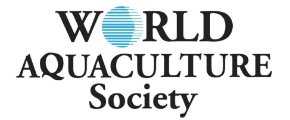EFFICACY OF ALTERNATIVE SALT MIXTURE TO GROW PACIFIC WHITE SHRIMPS Litopenaeus vannamei
Low-salinity inland ponds and indoor tanks are two alternative production strategies for shrimp. Though Pacific white shrimp, Litopenaeus vannamei exhibit a remarkable ability of tolerating a wide range of salinities, proper acclimation to an appropriate environment is critical. In the case of low salinity culture, post larvae are often transferred into systems for which the salinity has been adjusted with crystalline sea salt (CSS), which are formulated for salt-water aquariums. However, the price is not within a sustainable range considering the volume of salt necessary for the acclimation process or to operate an indoor recirculating aquaculture system which operates at considerably higher salinities (>10 g/L). Therefore, the current study was carried out with the objective of testing the efficacy of lower cost salt solutions to replace expensive crystalline sea salt. A 15-g/L low-cost salt mixture (LCSM) solution consisted of sodium chloride (11.31 g/L), magnesium chloride (0.855 g/L), magnesium sulfate (1.83 g/L), potassium chloride (0. 24 g/L), calcium chloride (0.69 g/L) and sodium bicarbonate (0.09 g/L) was prepared to yield sodium, calcium, potassium, and magnesium concentrations of 4474, 249, 126, and 588 mg/L, respectively which is comparable with the particular cation concentrations in 15g/L sea water. The growth trial of Pacific White shrimp (initial weight = 0.17 ± 0.01g and stocking density = 20 shrimps/tank) was carried out in 150 L plastic tanks, each equipped with a miniature fluidized bed bio-filter. CSS was incrementally replaced (2.5, 25, 50, 75 and 100 %) with LCSM at four replicates per treatment. Shrimp were fed four time/day using a standard ration over the 42-day growth trial. According to the statistical analysis, shrimp reared in treatment 3-6 (25, 50, 75 and 100% LCSM) had significantly higher growth performances over treatment 1 and 2 (100 and 97.5% CSS) while no significant differences were observed in survival between the different ion solutions. Results reflect the potential use of LCSM to replace CSS with a significant advancement in growth of shrimps (Table 1) which could be an excellent solution to bring down the cost of production for indoor shrimp aquaculture (and acclimation process in low salinity inland ponds), thereby helping to further stimulate the growth of the industry













